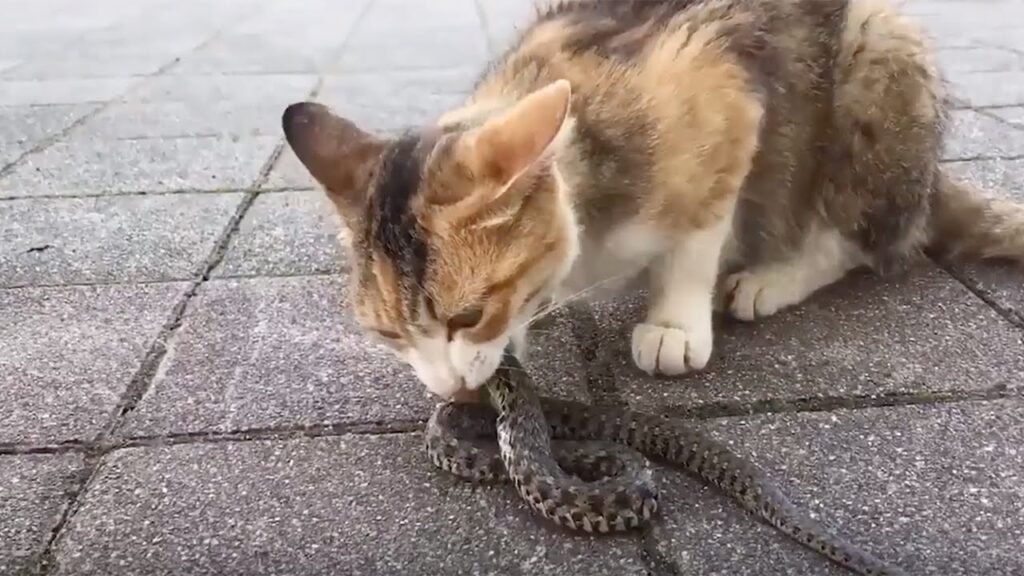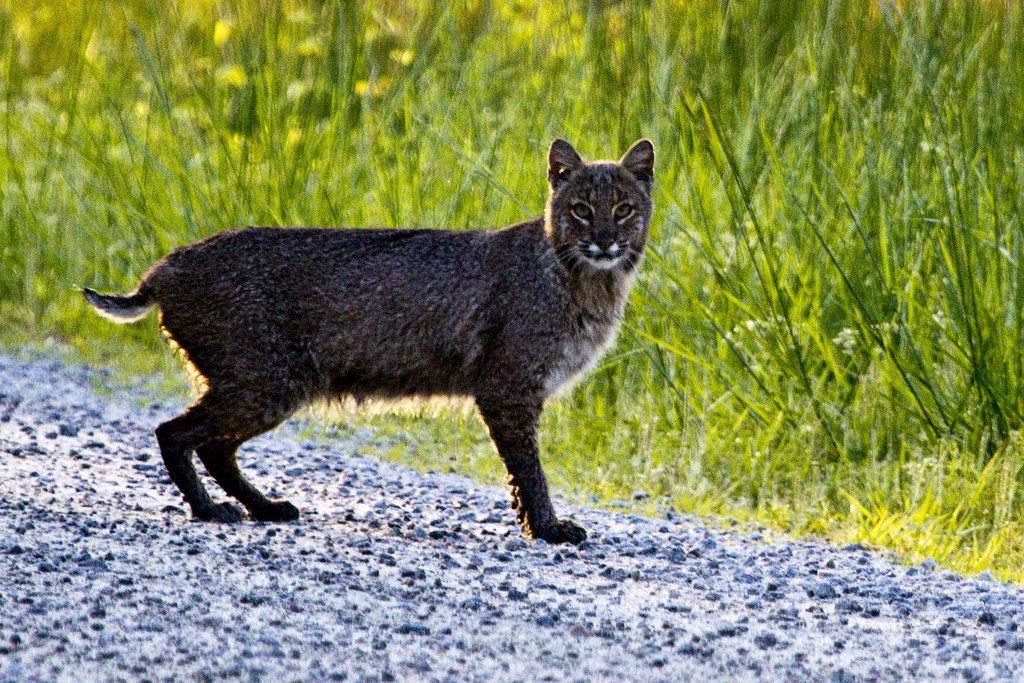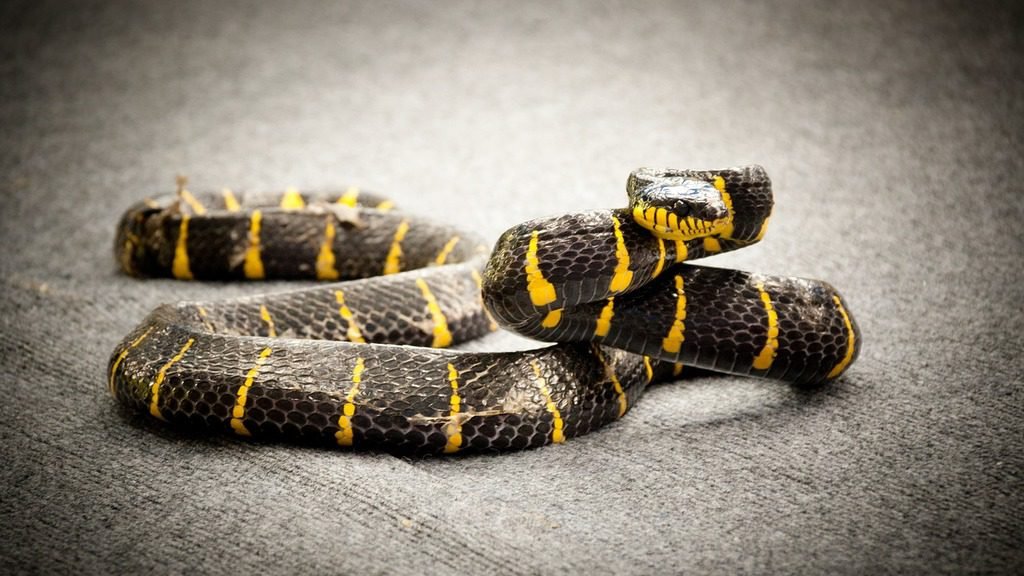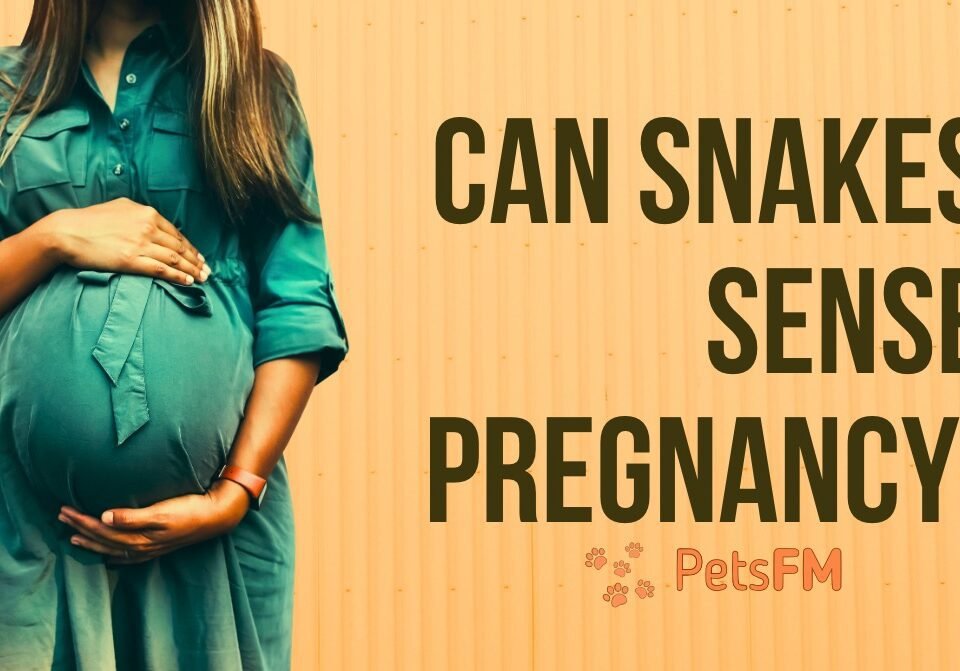


Can snakes be pets? (Do they like being a pet?) Pros/Cons
February 24, 2024


Can Koi Fish Live In A Tank? How Many Can Live Together?
February 25, 2024Cats are curious creatures, often exploring their surroundings with keen interest. This adventurous nature sometimes leads them to encounter snakes. But can cats safely eat snakes? This topic explores into the fascinating interaction between cats and snakes, exploring whether it’s safe for our feline friends to indulge in such prey.
We’ll look at the risks involved, including potential health hazards and the possibility of poison from venomous snakes. Understanding this dynamic is crucial for pet owners who want to ensure the safety and well-being of their beloved cats while allowing them to express their natural hunting instincts.
But first, here’s a quick answer: Cats can eat snakes and often do so in the wild as part of their natural hunting behavior. However, it’s essential to consider the risks involved. Venomous snakes pose a significant danger, as their venom can be lethal to cats. Additionally, snakes may carry parasites and diseases that could harm your cat. While the occasional small, non-venomous snake might not pose a significant risk, preventing your cat from eating snakes is generally safer to avoid potential health issues.
The feline predatory behavior – Is it possible for cats to eat snakes?
Cats love to hunt. It’s in their nature. They chase and catch things because their wild ancestors did the same to survive. Even when not hungry, a cat might still go after a mouse, bird, or toy because hunting is part of being a cat.
Wild or feral cats eat a variety of prey, including snakes. For these cats, snakes are just another source of food. They provide protein and help satisfy a cat’s hunting instinct. However, not all cats will eat snakes; for many domestic cats, it’s more about the hunt than the meal itself.


Can cats eat snakes?
Are snakes healthy for cats?
Yes, snakes can be a source of protein for cats, but they are not the safest or healthiest option. Eating snakes might expose cats to health risks like parasites and venom.
Cats might find snakes interesting to chase and sometimes eat. In the wild, eating a snake can give a cat essential nutrients like protein.
However, this doesn’t mean it’s a good idea for pet cats. Snakes can carry germs and parasites that might make cats sick. Also, eating a venomous snake could be very dangerous if a cat tries to eat it. So, while snakes could be part of a wild cat’s diet, pet owners should be careful to keep their cats away from snakes to keep them safe and healthy.
What cat species eat snakes?
Many wild cat species have been observed hunting and eating snakes as part of their natural behavior. Some of these include:
- African Wildcats (Felis silvestris lybica): Ancestors of domestic cats that hunt small prey, including snakes.
- Bobcats (Lynx rufus): North American cats known to prey on various animals, including snakes.
- Leopards (Panthera pardus): Large felines with a broad diet, capable of hunting snakes among other prey.
- Tigers (Panthera tigris): While not commonly known for eating snakes, they are opportunistic hunters and can eat snakes if available.
- Ocelots (Leopardus pardalis): Small to medium-sized wild cats that may include snakes in their diverse diet.


Wild Bobcat: Creator: U.S. Fish and Wildlife Service Southeast Region
How do cats eat snakes? Can they digest it well?
Cats eat snakes by killing them first, usually with a combination of biting and clawing, and then consuming them whole or in large pieces. Cats have a digestive system well-suited to processing meat, including snakes, which are primarily muscle.
Here are some points about how cats digest snakes:
- Efficient Digestion: Cats have a highly acidic stomach that helps them digest protein and bones, making it possible to break down the snake’s body, including its skeletal structure.
- Nutritional Benefit: Snakes can provide cats with protein and other nutrients, as they are carnivores, and their bodies are adapted to extract nutrients from animal-based sources.
- Potential Risks: While cats can digest snakes, eating a snake carries risks, such as exposure to parasites or the possibility of ingesting venom from venomous snakes, which could harm the cat.
- Natural Instinct: Eating snakes taps into a cat’s natural instinct as a predator. In the wild, consuming a variety of prey, including snakes, is normal for survival and nutritional diversity.
Also, Read: Can Frogs Eat Snakes? Mystery Unveiled
What are the risks involved?
Eating snakes can pose several risks to cats, from venomous bites to health issues caused by parasites. Here are the key dangers:
- Venomous Snakes: Cats may not distinguish between venomous and non-venomous snakes, risking venomous bites that can be fatal or cause severe health problems.
- Parasites and Diseases: Snakes can carry parasites and diseases that can be transferred to cats upon consumption, potentially leading to illness or infection.
- Injuries During the Hunt: Hunting a snake can lead to cat injuries, such as bites or scratches, which may require medical attention.
These risks highlight the importance of supervising outdoor cats and discouraging them from interacting with snakes to ensure their safety and well-being.
What happens when a cat eats a venomous snake?
When a cat eats a venomous snake, it can be exposed to its venom either through a bite during the hunting process or, less commonly, through ingesting it directly.
The symptoms following such an encounter can vary depending on the type and amount of venom involved but may include:
- Swelling or Pain: The area around the bite may swell and be painful to touch.
- Weakness or Lethargy: The cat might appear unusually tired, weak, or uninterested in moving.
- Vomiting or Diarrhea: Digestive upset is a common reaction to being poisoned.
- Difficulty Breathing: Respiratory distress can occur if the venom affects the cat’s nervous system.
- Drooling or Foaming at the Mouth: An abnormal amount of drooling or foam can indicate nausea or neurological effects.
- Seizures: In severe cases, venom can cause seizures or convulsions.
- Collapse or Loss of Consciousness: This is a sign of a severe reaction and requires immediate veterinary attention.
How do you identify safe from dangerous snakes?
Recognizing the difference between venomous and non-venomous snakes is crucial to protecting humans and pets. Here are tips and advice for identification and prevention:
- Look for Distinctive Features: Venomous snakes often have triangular-shaped heads, elliptical pupils (like a cat’s eye), and, in some species, visible pits between the eyes and nostrils. Non-venomous snakes usually have rounded heads, round pupils, and no pits.
- Color and Patterns: While not a foolproof method, venomous snakes may have distinct color patterns that can serve as a warning. However, this varies significantly by species and region.
- Behavior: Venomous snakes may exhibit defensive behaviors such as coiling tightly and raising their heads. However, non-venomous snakes might also display similar behaviors when threatened.
To keep cats safe from dangerous encounters:
- Limit Outdoor Access: Supervise outdoor time or consider a secure outdoor enclosure to minimize encounters with snakes.
- Maintain Your Yard: Keep grass short and remove debris or wood piles where snakes may hide.
- Educate Yourself: Know the types of snakes common to your area and their behaviors.
- Check Enclosures Regularly: If you have an outdoor enclosure for your cat, inspect it for any signs of snakes or other wildlife.


Venemous Snake
What to do if your cat eats a snake?
If you suspect your cat has eaten a venomous snake or is showing signs of illness after eating it, it’s essential to act quickly and carefully. Here’s what you need to do:
Immediate steps:
- Keep Calm: Your calmness can help keep the cat more relaxed.
- Observe Symptoms: Note symptoms such as vomiting, diarrhea, lethargy, swelling, or difficulty breathing.
- Isolate Your Cat: Keep your cat in a quiet, safe area to prevent further injury and closely monitor their condition.
When to seek veterinary care:
- Immediate Signs of Distress: If your cat shows any immediate signs of distress or symptoms of venom poisoning (swelling, difficulty breathing, paralysis, etc.), seek veterinary care immediately.
- Any Illness Symptoms: Even if the symptoms seem mild (vomiting, slight lethargy), it’s better to consult a veterinarian to rule out potential poisoning or internal injuries.
- Unknown Snake Type: If unsure whether the snake is venomous, getting a professional assessment is safest.
- Preventive Measures: Even if your cat seems fine, discussing preventive measures and possible deworming with your vet is wise, as snakes can carry parasites.
Additional advice:
- Do Not Wait: Waiting to see if symptoms worsen can be dangerous, especially with venomous snake bites, as the sooner the treatment starts, the better the outcome.
- Information for the Vet: Provide as much information as possible about the snake (if you saw it) and your cat’s condition to the veterinarian.
FAQs
Can a cat die from eating a venomous snake?
Yes, a cat can die from eating or being bitten by a venomous snake due to the toxins in the venom. Immediate veterinary care is crucial in such cases to increase the chances of survival.
How can I tell if a snake my cat caught is venomous?
Identifying a venomous snake often involves noting specific features such as a triangular-shaped head, elliptical pupils, and distinctive color patterns. However, since these characteristics can vary, it’s safest to assume any unknown snake could be dangerous and consult a professional.
Do all cats instinctively know how to hunt snakes?
While hunting is an instinct for most cats, not all will instinctively know how to hunt snakes effectively. Experience, age, and individual temperament also play significant roles in a cat’s hunting behavior.
What should I do if I find my cat playing with a snake?
If you find your cat playing with a snake, calmly and safely separate them from the snake. Remove your cat from the area, check them for any injuries or signs of a snake bite, and consult a veterinarian if you have any concerns.
Are particular cat breeds better at hunting snakes than others?
While specific breed differences can influence hunting abilities, it’s more about the individual cat’s instincts and experiences. Outdoor and feral cats, including snakes, are generally more practiced in hunting than indoor cats.
Conclusion
This blog explored cats’ natural hunting instincts, particularly their interactions with snakes. We discussed the risks, including venomous snakes, parasites, and potential injuries. We offered tips for distinguishing between safe and dangerous snakes and advised on keeping cats safe from these encounters.
Balancing a cat’s instinctual behaviors with safety measures is crucial, ensuring our feline friends can express their natural tendencies while minimizing risks to their health and well-being.



